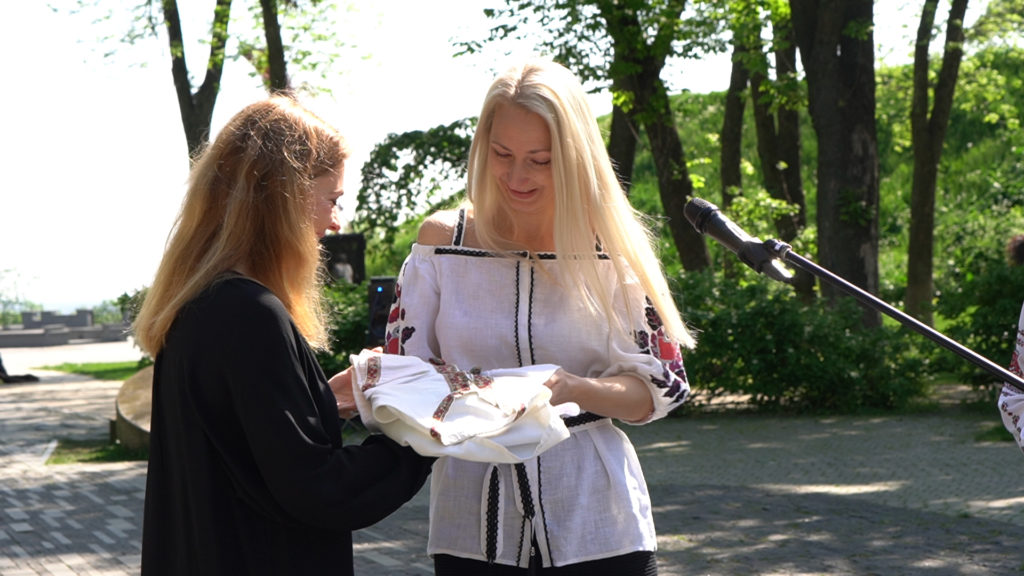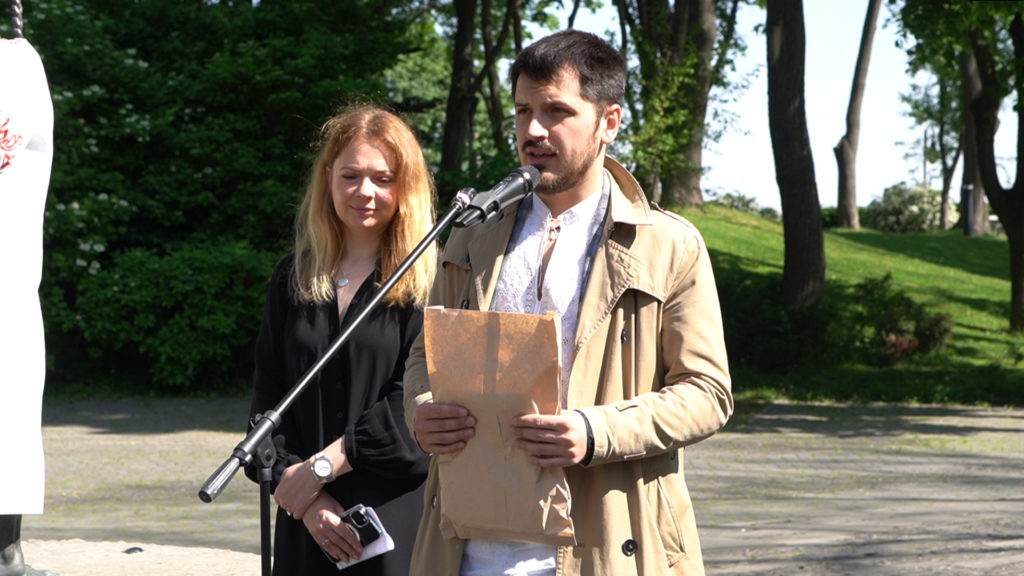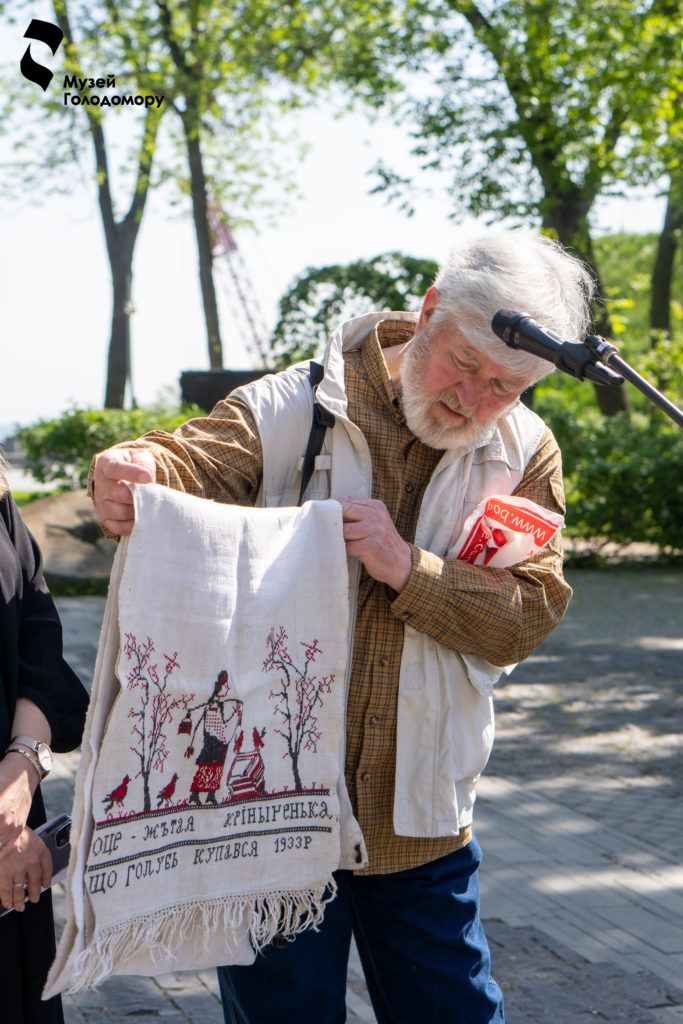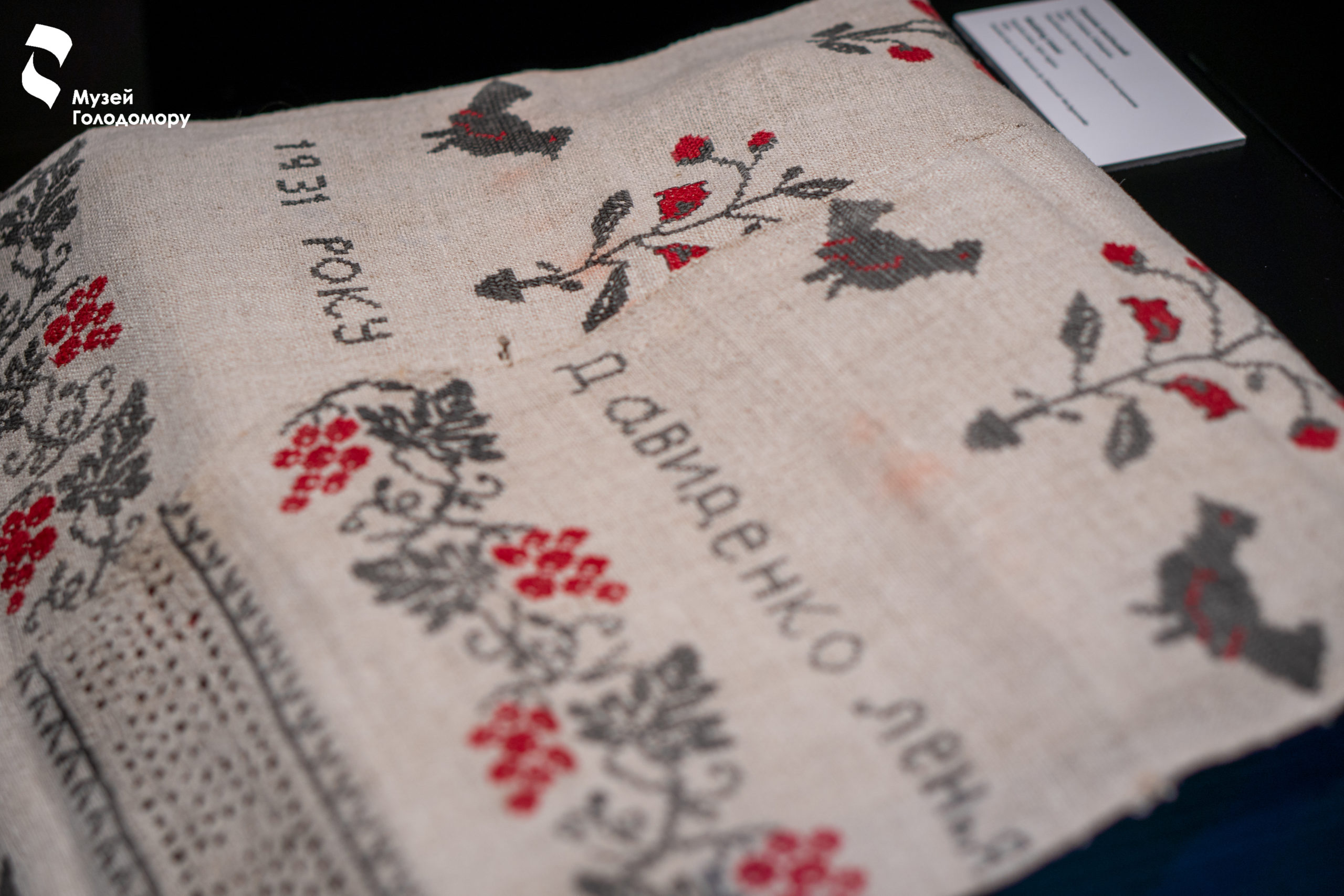The Holodomor Museum received new exhibits
As part of the event on Vyshyvanka Day and International Museum Day, several unique items were handed over to the collection of our institution.
So, Anna Tkach from Kyiv donated a family shirt that was passed down from generation to generation through the male line. The last owner of the shirt was the donator’s husband, Dmytro Nekipelov, a soldier of the Ukrainian Armed Forces who went missing in May of last year near Avdiivka.

Anna Tkach donated a family shirt to the Museum, which was passed down through the male line from generation to generation.
“This shirt was woven and embroidered in the 1930s for her husband Stepan by my great-grandmother Khrystyna from Uladivka village in the Vinnytsia region. Then the embroidered shirt passed to his son Ilya, my grandfather, and then to his son Volodymyr, my father, – says Anna Tkach. – My dad had no sons, so the shirt was given to my husband. Dmytro is an ethnic Russian, but a Ukrainian in spirit. He was born in Altai, but when he was two years old, his parents moved to Crimea. He was having a hard time with the annexation of Crimea in 2014, he was always eager to go to the front, repeating: “I will never forgive them Crimea.” He had a pedagogical and legal education, but in a difficult time for Ukraine, he took up arms and went to defend the land that became his native land. On February 24 of last year, I saw him for the last time… Later, I decided that the family shirt should be in the museum. As a symbolic reminder of our difficult history: its first owners survived the Holodomor, and 90 years later the same enemy came to destroy us again.”
Eduard Krutko, the collector and founder of the ethnographic collection Drevo from the Poltava region, handed over embroidered towels from the period of collectivization and the Holodomor to the Museum:

Eduard Krutko, founder of the ethnographic collection Drevo.
“These are things from my native village of Kozubivka. The towel I am holding was embroidered by a woman who saved my great-grandmother Oryshka’s family after the dekulakization. My great-grandfather was shot while his wife was pregnant with their sixth child. Everything was taken from them; they even pulled out the rope they were sitting on from under the children and smashed a pot of potatoes in the middle of the house. Neighbours and fellow villagers were forbidden to help the dekulakized. My pregnant great-grandmother and her five children were doomed to starvation. But the neighbour Khrystia Denysenko used to bury a piece of lard or bread in the leaves at the border of the gardens at night, and the great-grandmother used to come at night and find the hidden food. Thanks to this, she was able to save all her children.”
Another towel belonged to Marfa Danylenko. When they came to dekulakize her family (and they warned them about it the day before), the woman wrapped a towel around herself and thus saved this thing.”
Oleksandr Nechyporenko, the son of Lavrin Nechyporenko, whose diary of memories “The year 33rd” is kept in the exposition of our Museum, handed over a towel from the Chernihiv region, which dates back to 1933.

Oleksandr Nechyporenko, son of Lavrin Nechyporenko, author of memoirs about the Holodomor “The year 33rd”.
“I assume that this towel was embroidered at the end of 1933, when the harvest had already been harvested and people had hope for the best. After all, we see an optimistic plot and an inscription on it (a girl with a carrying pole is embroidered on the towel, as well as a line from the song “This is the little well that the pigeon bathed in. This is the little well where I fell in love”). The inscription was apparently copied by an embroiderer from an older model because a hard sign was still used here. This is a traditional text found on many towels from the Chernihiv region,” the donator said.
Oleksandr Nechyporenko also thanked the Museum, which is currently preparing for publication of his father’s memories of the Holodomor, the effects of which he saw in his native village Yerchyki in the Zhytomyr region.
We remind you that an exhibition of authentic embroidered shirts from the institution’s stock collection is currently underway at the Holodomor Museum.
At the same time, we appeal to everyone who cares: if you have things, photos or documents from the Holodomor period, please donate them to the Museum. Each such thing is priceless and should be preserved!
